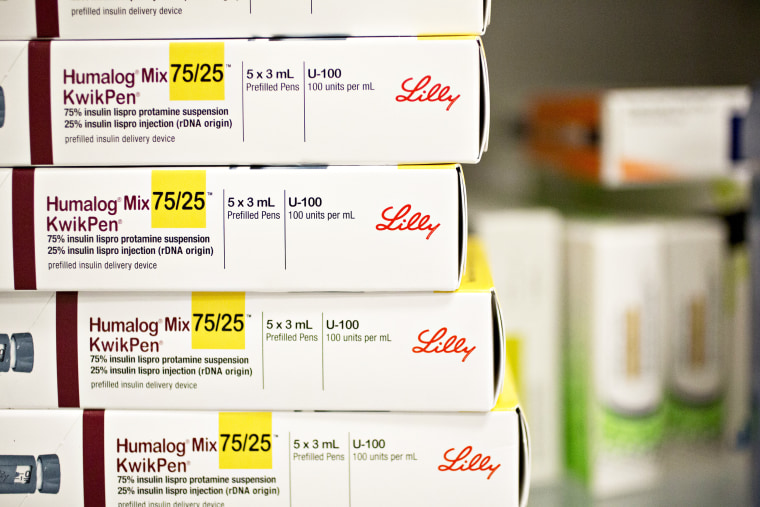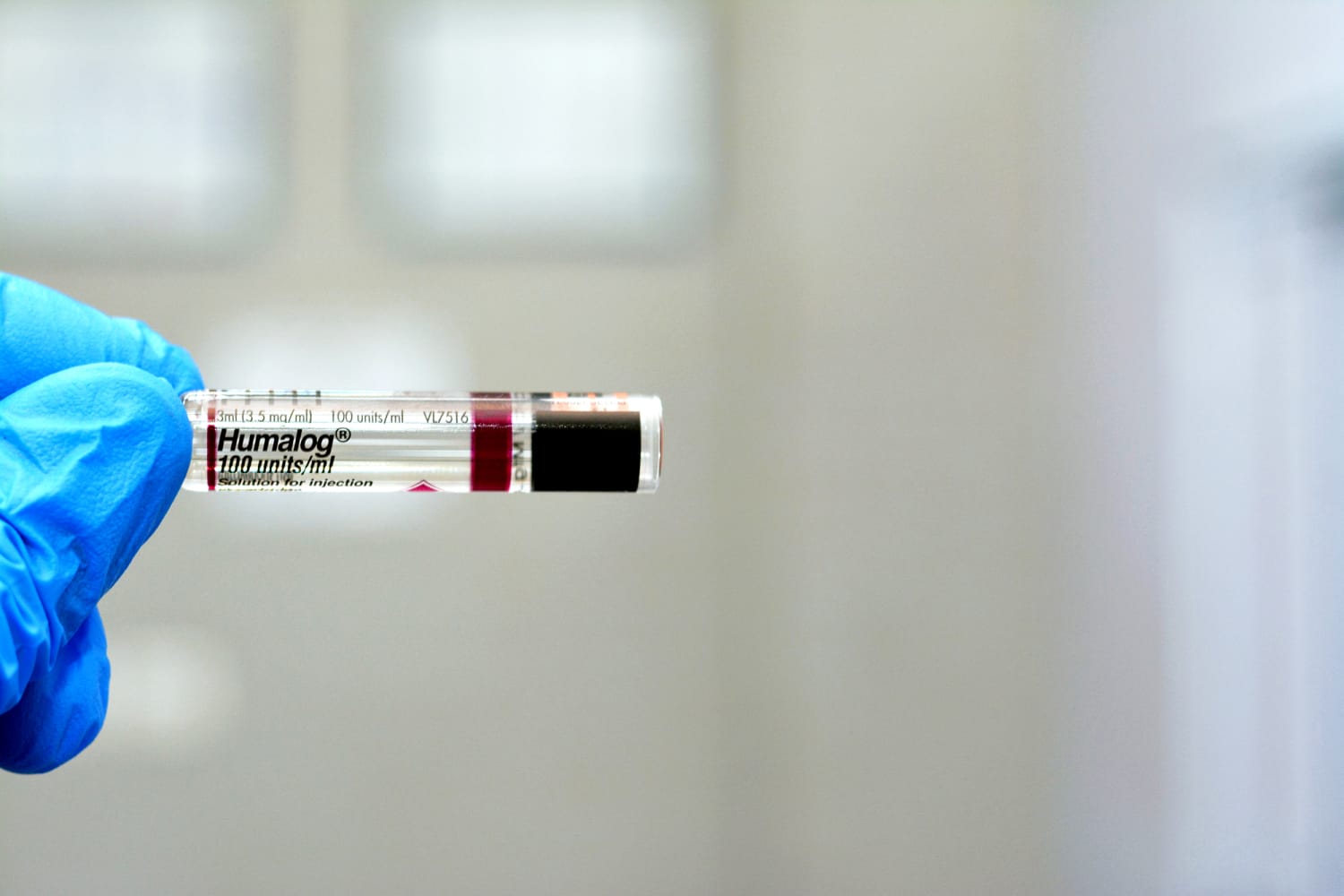Eli Lilly will cap the out-of-pocket cost of its insulin at $35 a month, the drugmaker said Wednesday. The move, experts say, could prompt other insulin makers in the U.S. to follow suit.
The change, which Eli Lilly said takes effect immediately, puts the drugmaker in line with a provision in the Inflation Reduction Act, which last month imposed a $35 monthly cap on the out-of-pocket cost of insulin for seniors enrolled in Medicare.
Insulin makers continue to face pressure from members of Congress and advocacy groups to lower the cost of the lifesaving medication. Insulin costs in the U.S. are notoriously high compared to the costs in other countries; the RAND Corporation, a public policy think tank, estimated that in 2018, the average list price for one vial of insulin in the U.S. was $98.70.

The cap automatically applies to people with private insurance. People without insurance will be eligible as long as they sign up for Eli Lilly’s copay assistance program.
That program began providing insulin to patients — regardless of their insurance statuses — for no more than $35 a month in 2020 because of the Covid pandemic.
The cap applies to all of Eli Lilly’s insulin products, said Kelly Smith, a spokesperson for the company. In addition to the cost caps, the company will lower the list price for several of its products, including Humalog, this year.
About 8.4 million people in the U.S. with diabetes rely on insulin, according to the American Diabetes Association. Three drugmakers — Eli Lilly, Novo Nordisk and Sanofi — dominate the insulin market.
Three out of 10 people with diabetes who rely on insulin use a product from Eli Lilly, Smith said.
In November, Eli Lilly’s stock price dropped sharply after a fake tweet from an imposter account falsely claimed that the company was making insulin free, renewing focus on its cost.
In addition to political pressure, Eli Lilly also faces the threat of competition from outside the industry, said Larry Levitt, the executive vice president for health policy at KFF, formerly known as the Kaiser Family Foundation.
Civica Rx, a nonprofit company in Lehi, Utah, said last year that it plans to make and sell generic versions of insulin to consumers at no more than $30 a vial and no more than $55 for a box of five pen cartridges. The state of California also plans to make low-cost insulin, as does Mark Cuban Cost Plus Drug Co., which sells drugs at low costs online.
“Eli Lilly definitely sees the writing on the wall,” Levitt said.
Stacie Dusetzina, a health policy professor at Vanderbilt University Medical Center in Nashville, Tennessee, agreed that the move was most likely driven by increased competition.
“The company is reacting to a tremendous amount of existing and upcoming competition for these drugs,” she said.
Follow NBC HEALTH on Twitter & Facebook.
Source: | This article originally belongs to Nbcnews.com









